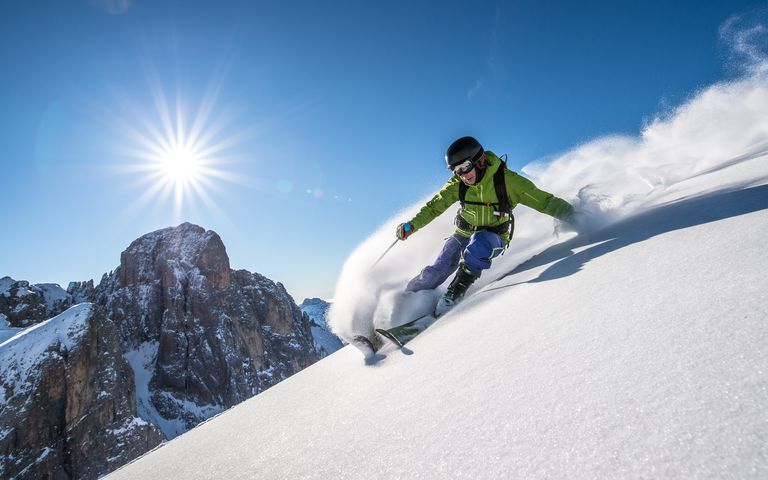Recent Posts
Skiing Vs Snowboarding: Differences
25th July 2023Best Tips For Fishing: Beginners and Intermediate Fishers
25th July 2023Cycling Safety Measures and Best Practices
16th July 2023Benefits Of Cycling For Physical and Mental Health
15th July 2023The 3 Common Injuries To The Shoulder Due To Skiing

When a person goes down these first tracks while learning to ski, she usually shows caution and restraint. However, after a few years, this same person, gaining confidence, which is normal, thinks he can take the same leads without being as cautious as before.
The most common ski injuries include shoulder injuries. Here’s how and why they happen so you can better prepare and avoid them.
It is a mistake to lose this attitude of caution, say the doctors. They treat many patients each year who fall despite their age and experience. One among the most common injuries in skiing, shoulder injury, occurs at an alarming frequency. Here are some of the ways skiers damage their shoulders on the slopes.
1. Lesions of the rotator cuff
Rotator cuff lesions are the most common ski injuries and occur most often in skiers attempting jumps and other freestyle movements. The muscles of the rotator cuff support the shoulder joint, and when the tendons surrounding these muscles swell, this often results in tendonitis. Excessive use forces the ligaments to stretch beyond their limits.
If you have a sore shoulder and the pain worsens when you raise your arms – or if your movements are restricted – you may have rotator cuff damage.
The doctor will advise you to apply ice to your shoulder and will prescribe painkillers and anti-inflammatory medications. With some time, rest, and also a little physical therapy to develop strength and movement, you should heal fully.
2. Fractures of the clavicle
Usually caused by falls, clavicle fractures occur when you fall on your outstretched hand. The momentum of your body produces the force to travel in your arm and up to your collarbone, and the effect is sometimes enough to break the bone.
This painful injury will usually bruise and swell. You can feel the pain not only in your collarbone but also in your shoulder and your arm. It is required to wear your arm in a sling to immobilize your shoulder joint, which could otherwise create pressure on your collarbone during movement.
After healing, you will probably need physical therapy to strengthen your range of motion. If you put ice on the area, it can also help reduce swelling.
3. Dislocations of the shoulder
If you hurt yourself this way, you will know it immediately; disruption of the shoulder is incredibly painful, and you will only think about it.
The shoulder breaks more quickly than other joints in the body, because the joint cavity is not as deep as for others, like the hip. A significant impact a collision or a fall, for example, can result in dislocation of the shoulder. This extreme pain may spread from your shoulder to your back and arms. Your doctor will immediately recognize a disorder of the shoulder to its rounded (not squared) appearance. Swelling and bruising may also occur.
The doctor will have to put the ball of the shoulder joint back into the joint cavity and immobilize the area with a sling. You will not be able to ski for some time after a dislocation of the shoulder since the soft tissues around the shoulder will be damaged and will require a significant rest.
You will be happy later if you decide to do physical therapy to strengthen your muscles and improve your range of motion. Now that you know more about these 3 common shoulder injuries, you can be extra vigilant to avoid them. See a doctor immediately if you get hurt. In the meantime, have a good ride!
Recent Posts
Techniques and Best Practices for Anglers
21st November 2023Hiking Vs Trekking: Differences and Similarities
12th August 2023How to Lose Weight by Cycling
12th August 2023How to Choose Skis for Beginners
12th August 2023Related Articles
Types of Hiking Trails: Options to Explore
Hiking captures the hearts of people across ages and fitness levels as...
By Fortunatus Adunola25th July 2023Benefits Of Cycling For Physical and Mental Health
Cycling, a broadly embraced hobby, brings forth manifold blessings for each physical...
By Fortunatus Adunola15th July 20235 proven strategies to teach your child skiing.
It’s done, your holidays in the mountains are reserved! To you, the...
By O. Johnson Taiwo11th June 2019Five Activities To Do With Children
Going skiing with kids can often be stressful for parents. But do...
By O. Johnson Taiwo11th June 2019














